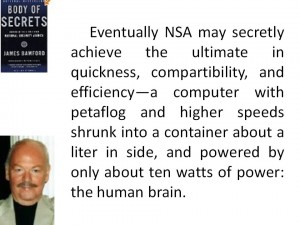
Fortunately, most librarians have gotten used to the fact that the Internet is a tremendous boon to researchers and that free information is a fantastic idea. Sure, we haven't yet reallocated our organizational resources to recognize this fact—our staff time is much more likely to be devoted to acquiring and messing about with purchased information than in making good information from our archives, our labs, or the web more easily available. [Emphasis added.]

We need to separate our value—the way we curate information, champion its availability in the face of intolerance of unpopular ideas and economic disparity, and create conditions for learning how to find and use good information—from the amount of money it takes to acquire stuff on the not-so-open market. We need to be quite clear that good information is good information, no matter how it's funded. And we need to find creative ways to partner with those who add value to information and find sustainable models for the editorial work that can make good academic work better.
Phi Beta Iota: Librarian Barbara Fister has written a very fine condemnation of the “big book” approach of the major publishers, and a subtle useful overview of how librarians–and the publishing industry–must change to meet the needs of INDIVIDUAL readers who want “just enough, just in time” ARTICLES or CHAPTER. Most librarians are still in the industrial era model of book acquisition and cataloging. That model died over a decade ago. The new model since at least 1998 has been what we call the four D's: Discovery, Discrimination, Distillation, and Delivery. As we migrate from Open Source Intelligence (OSINT), a term that has been mis-appropriated and abused by governments bent on “owning” decision-support, and migrate toward M4IS2 (Multinational, Multiagency, Multidisiplinary, Multidomain Information-Sharing and Sense-Making), HUMAN LIBRARIANS WILL BE CENTRAL and fully the co-equal if not the master of SYSTEMS. Indeed, Doug Engelbart, inventor of the mouse and founder of the Doug Engelbart Institute, and moved beyond the article or chapter with his Open Hypertextdocument System (OHS) that links PARAGRAPHS. Imagine being able to “see” all the relevant paragraphs on a wall chart covering the relationship of the US entities (corporations, foundations, and government entities) with the Taliban–this is the emerging model for understanding vast quantities of information. Laser pointing at any paragraph shows it provenance (source validation) data as well as mathematical calculations of its crediiblity in context, something Google is working on, but Google is not human-oriented and thinks it can cut the human out of the analysis loop, which is why Google will ultimately fail.

See also:
Who’s Who in Librarian Intelligence: Arno Reuser
2006 Reuser (NL) on Virtual Open Source Agency
2003 Reuser (NL) on Intelligence Librarian Tradecraft
Reference: When InterNET Is InterNOT
Who’s Who in Public Intelligence: Ran Hock
2004 Marlatt (US) Military Librarianship in an Academic Environment
Journal: 100 years of Big Content fearing technology—in its own words
New Librarian-Based Collaborative Text Messaging Reference Service (Ask-a-Librarian a Question via Mobile)
Review: Empire of Illusion: The End of Literacy and the Triumph of Spectacle
Review: Weapons of Mass Instruction
1995 Bjore (SE) Six Years of Open Source Information (OSI) Lessons Learned
1995 Bender (US) The Information Highway: Will Librarians Be Left by the Side of the Road?
The Greatest Minds and Ideas of All Time
Review: Teaching to Transgress–Education as the Practice of Freedom
Just How Stupid Are We?: Facing the Truth About the American Voter



